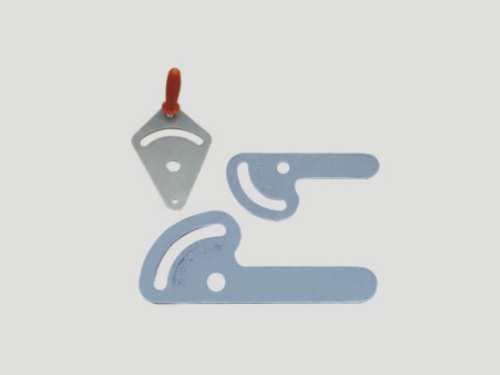Air valve mechanism
Air volume control valve actua
Air valve actuator
Remote controller for smoke ex
Air conditioning accessories
tuyere

Manual adjustment valve and handle
The manual regulating valve handle is an important part of the manual regulating valve. It is directly operated by the user to control the opening and closing degree of the valve, thereby adjusting the flow and pressure of the fluid. The following is a detailed analysis of the manual regulating valve handle:
1. Structure and composition
The manual regulating valve handle is usually composed of a handle body, connecting parts (such as sleeves, bearings) and possible auxiliary devices (such as limit switches, indicator lights, etc.). The handle body is the part that the user directly holds and rotates, and its design should take ergonomics into consideration for easy operation. The connecting parts are responsible for transmitting the rotational motion of the handle to the valve stem, thereby driving the movement of the valve core.
2. Working principle
When the user rotates the handle of the manual regulating valve, the rotational motion is transmitted to the valve stem through the connecting parts, and the valve stem then drives the valve core to move in the valve body, thereby changing the relative position between the valve core and the valve seat, thereby adjusting the flux of the fluid through the valve. The rotation direction and rotation angle of the handle determine the opening degree of the valve and the flow rate of the fluid.
3. Features and advantages
Easy operation: The design of the manual regulating valve handle is usually simple and clear. The user only needs to rotate the handle to control the valve, which is easy and quick to operate.
Good intuitiveness: There is a certain correspondence between the rotation angle of the handle and the degree of opening of the valve. The user can roughly judge the degree of opening of the valve by observing the position of the handle.
High reliability: The manual regulating valve handle does not rely on electricity or other external energy sources, so it can still work normally in power outages or emergencies, and has high reliability.
Easy to maintain: Compared with electric or pneumatic actuators, the structure of the manual regulating valve handle is relatively simple and more convenient to maintain.
IV. Application scenarios
The manual regulating valve handle is widely used in various occasions where manual adjustment of fluid flow and pressure is required, such as the chemical industry, petroleum industry, metallurgical industry, papermaking industry, etc. In these fields, the manual regulating valve handle has been widely welcomed for its advantages such as simple operation, high reliability and easy maintenance.
V. Precautions
When using the manual regulating valve handle, be careful not to use too much force or rotate the handle too quickly to avoid damaging the valve or affecting the adjustment accuracy.
Regularly check whether the connecting parts of the manual regulating valve handle are loose or worn. If there are any abnormalities, they should be repaired or replaced in time.
When the manual regulating valve is not used for a long time, the handle should be rotated to the closed position and the locking device (if any) should be locked to prevent accidental opening and fluid leakage.
In summary, the manual regulating valve handle is an important part of the manual regulating valve. It controls the valve through the user's rotation operation and has the advantages of simple operation, good intuitiveness, high reliability and easy maintenance. It has been widely used in various industrial fields that require manual adjustment of fluid flow and pressure.
Working principle of the actuator of the air volume control valve
Electric air volume control valve, as an intelligent air duct equipment, is widely used in air conditioning systems in fields such as construction, medical care, and industry. It can automatically adjust the opening of the valve according to the air flow
2024-05-06
The execution content of the fire damper actuator
To drive the valve action, a matching actuator is required. The actuator used for fire dampers may not be electrically driven, but may also be electrically driven.
2024-05-06
The structural composition of the fire damper actuator
The fire damper actuator is a type of actuator used for fire dampers in ventilation and air conditioning system pipelines, which solves the problem of inaccurate adjustment of the opening angle of valve blades, thus unable to accurately control the ventil
2024-05-06
What functions can the actuator of the air volume control valve achieve?
The actuator of the air flow regulating valve is an automated equipment used to control the air flow valve in ventilation ducts. It can automatically adjust the opening of the air valve by receiving signals from the control system to achieve the goal of c
2024-05-06
